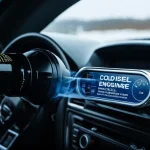Authoritative Foundations of British Paint Protection
British paint protection is grounded in a thorough understanding of paint types and British detailing standards. The diverse range of automotive finishes found on UK vehicles demands specialized care techniques tailored to their unique compositions. Whether dealing with traditional single-stage paints or modern multi-layered clear coats, mastery of these finishes is essential for effective paint protection.
Defining paint protection involves recognizing its role in preserving the vehicle’s aesthetic and functional integrity. Proper paint protection safeguards against environmental hazards such as UV radiation, acid rain, and road debris, which can otherwise accelerate wear and fading. The expected outcomes include sustained gloss, minimized surface damage, and prolonged lifespan of the vehicle’s exterior.
Additional reading : Rainy season roadmasters: crucial brake disc care tips for uk’s wet winters
The car care handbook dedicated to British standards is structured to guide enthusiasts and professionals alike through a systematic approach, emphasizing expertise, experience, authority, and trustworthiness (E-E-A-T). This approach ensures that readers develop a comprehensive understanding of both theory and practical application, reinforcing the reliability of the information. The handbook’s design addresses key questions about how to select and apply protective coatings, thus empowering users to achieve optimal results with confidence.
Selecting and Using Polishing Tools: British Recommendations
When focusing on polishing tools suitable for British detailing standards, the choice hinges on both the quality of the equipment and the technique employed. British detailing equipment is renowned for its precision and reliability, making it essential to select tools that meet these strict expectations.
Topic to read : Become a pro at shifting gears in uk cars: expert tips for smooth and skillful manual driving
Machine vs hand techniques is a frequent topic among UK enthusiasts. Machine polishers, especially dual-action models, are highly recommended for achieving consistent results while minimizing the risk of paint damage. They are ideal for tackling larger surfaces efficiently. Hand polishing, on the other hand, remains valuable for delicate areas or fine finishing touches where control and subtlety are paramount.
Trustworthy British detailing brands have earned reputations through expert reviews spotlighting their durability and performance. Investing in tools from these brands ensures compatibility with UK vehicle finishes and compliance with local standards. Expert reviews often highlight the importance of balancing power with user-friendliness to achieve optimal polishing outcomes without overwhelming the user.
Understanding the specific polishing tools designed for British detailing equips professionals and enthusiasts alike with the knowledge to preserve vehicle aesthetics effectively. By selecting proven British detailing equipment and applying the suitable technique, polishing becomes an expertly managed task rather than a hit-or-miss effort.
Step-by-Step Guide to Expert Polishing Techniques
Mastering polishing techniques begins with thorough preparation. Before applying any polish, it is essential to clean and decontaminate surfaces meticulously. This ensures that dirt, oils, and residues do not interfere with the process. Inspection under good lighting will reveal imperfections such as swirls that require targeted attention.
Achieving a flawless finish involves several precise steps. Start by layering polish appropriately—too much can cause hazing, while too little reduces effectiveness. Buffing should be done with the correct speed and pressure to avoid heat buildup or paint thinning. For swirl removal, using a dual-action polisher with a suitable pad is recommended. This combination promotes even abrasion and reduces the risk of introducing new scratches.
Common mistakes include skipping proper cleaning steps, applying polishing compounds on contaminated surfaces, and using excessive pressure during buffing. British expert detailers recommend maintaining consistent, overlapping motions and periodically inspecting the area to ensure uniform correction. They also advise patience—rushing can leave uneven finishes or exacerbate swirls. By following these expert tips and employing advanced detailing methods, you can elevate your polishing results to professional standards.
Mastering Waxing: British Products and Pro-Level Application
Waxing techniques vary, but understanding the specific benefits of Carnauba wax and synthetic options is key in British conditions. Carnauba wax, derived from Brazilian palm leaves, is prized for its natural shine and durability, making it a favourite among enthusiasts seeking a deep, glossy finish. British wax products often combine this with synthetic components to boost protection against the UK’s typically damp and variable climate.
For optimal results, a structured application process should be followed. Start with a thorough cleaning and drying of the surface to remove contaminants. Apply wax in thin, even layers using a foam applicator or soft cloth, ensuring coverage without excess buildup. Allow the wax to haze—this usually takes around 10-15 minutes depending on temperature—then buff with a clean microfiber towel to unveil a radiant shine and form a protective layer. This stepwise approach enhances both the protection and aesthetic appeal of British wax products.
When selecting waxes, look for products tailored to UK environmental challenges, such as rain resistance and UV protection. British industry standards emphasize long-lasting formulas that maintain their effect despite frequent weather changes. Recommended products often feature superior durability and ease of application, making them ideal for both professionals and hobbyists committed to vehicle care.
Mastering waxing with the right British wax products and technique ensures that vehicles not only look great but also gain sustained protection suited to the UK’s unique climate.
Maintaining Long-Term Paint Protection in the UK
Protecting your vehicle’s paint care maintenance in the UK requires adapting to the unique challenges of its climate. The often unpredictable British weather—with frequent rain, humidity, and occasional frost—can undermine waxed and polished finishes if not properly managed. To ensure longevity, it is crucial to regularly inspect the paintwork for contaminants such as dirt, bird droppings, and road salts, which can degrade protective layers.
Routine washing is a fundamental step in maintaining paint protection. Using gentle, pH-balanced car shampoos helps avoid stripping off wax coatings. After washing, applying a top-up layer of wax or sealant every few months replenishes the protective barrier, keeping the finish resilient against environmental pollutants. When washing, avoid harsh brushes or abrasive sponges to preserve the integrity of the paint.
Winter presents additional challenges for paint care maintenance in the UK. Salt used on roads to prevent ice buildup can rapidly corrode paint surfaces. A safe winter maintenance routine includes frequent washing to remove salt residue and applying protective products formulated for cold conditions. Storage of waxes and polishes in cool, dry places prevents degradation of these products, ensuring their effectiveness for future applications.
By combining routine inspections, careful washing techniques, and seasonal adjustments, car owners can maintain a durable paint finish despite the rigors of the UK climate.
Expert Insights: Avoiding Common Mistakes and Adopting Best Practices
In the British detailing scene, several common mistakes frequently impact the quality of a car’s finish. One typical error is neglecting environmental factors like drizzle or high humidity, which are common in the UK and can affect product curing times. British best practices emphasize timing the application of coatings during dry spells and using controlled environments whenever possible. Another mistake is overusing polish or compound, which can damage delicate paint layers; experts recommend minimal product application combined with tested machine settings for optimum results.
When paint issues persist despite standard approaches, advanced troubleshooting becomes essential. Detailing professionals suggest analyzing the paint’s history and type, as British vehicles often have varying paint formulations. They also advise checking for underlying causes like improper surface preparation or residual contaminants. Strategies include using specialized cleaners or paint correction techniques tailored for UK paint conditions, ensuring the protection and longevity of the finish.
Continuous learning is a hallmark of British detailing excellence. Membership in local detailing forums and participation in workshops help professionals stay updated on evolving products and techniques. Sharing experiences within British detailing communities fosters problem-solving and adoption of innovative methods. This culture of collaboration ensures that detailing adheres to the highest standards and avoids repeated detailing mistakes. Staying connected with these communities offers valuable expert tips and reinforces the commitment to British best practices.


